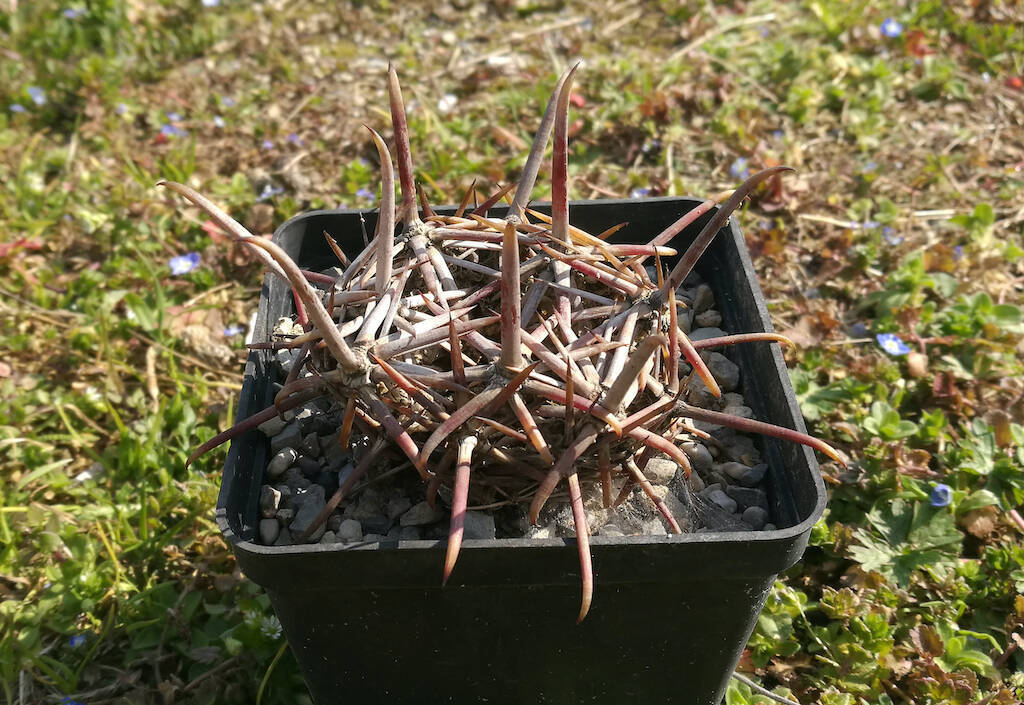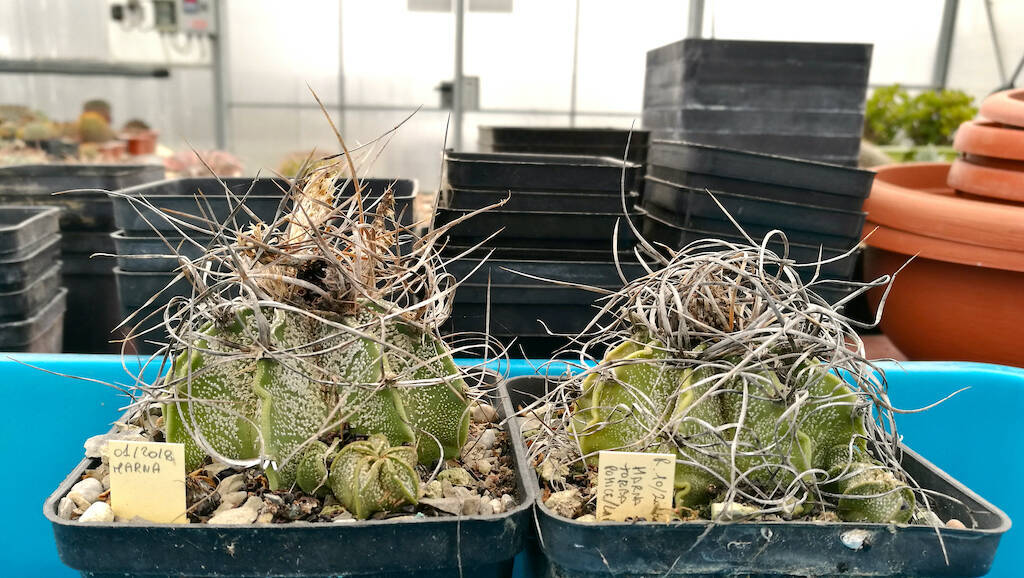Let’s talk about cacti and diseases starting from a simple photo. The plant that inspired this article, and which you see above, is (or rather, was) an Ancistrocactus (=Glandulicactus) mathssonii. I had obtained this specimen with my sowing about ten years ago and fortunately eight or nine other “brothers” of this plant are still in perfect health, growing and flowering regularly. This particular plant, although treated exactly like the other specimens of that sowing and planted in the same type of substrate in which my other mathssonii live (clay, marl and 60% aggregates), a couple of years ago took a fungal pathology and within a few weeks it was dead. I think it was fusarium, but today it doesn’t matter, because the disease has run its course and what remains is… the armor of this cactus, that is a beautiful interweaving of thorns that embraces the void left by the stem which, over time, it dried up until it decomposed and disappeared altogether. The observation of what remains of this plant, which for a couple of years I have kept along a low wall not far from the greenhouse, where I usually move the diseased plants (by diseases, in this case, I mean generically pathogens and parasites) to prevent them from infecting other specimens, led me to some considerations on the cultivation and treatment of plant diseases.
Considerations that I have condensed in the following article an excerpt of which was also published in the British Cactus and Succulent Society newsletter. (…)
Per proseguire nella lettura dell'articolo Accedi o Abbonati
To continue reading the article LogIn or Subscribe




